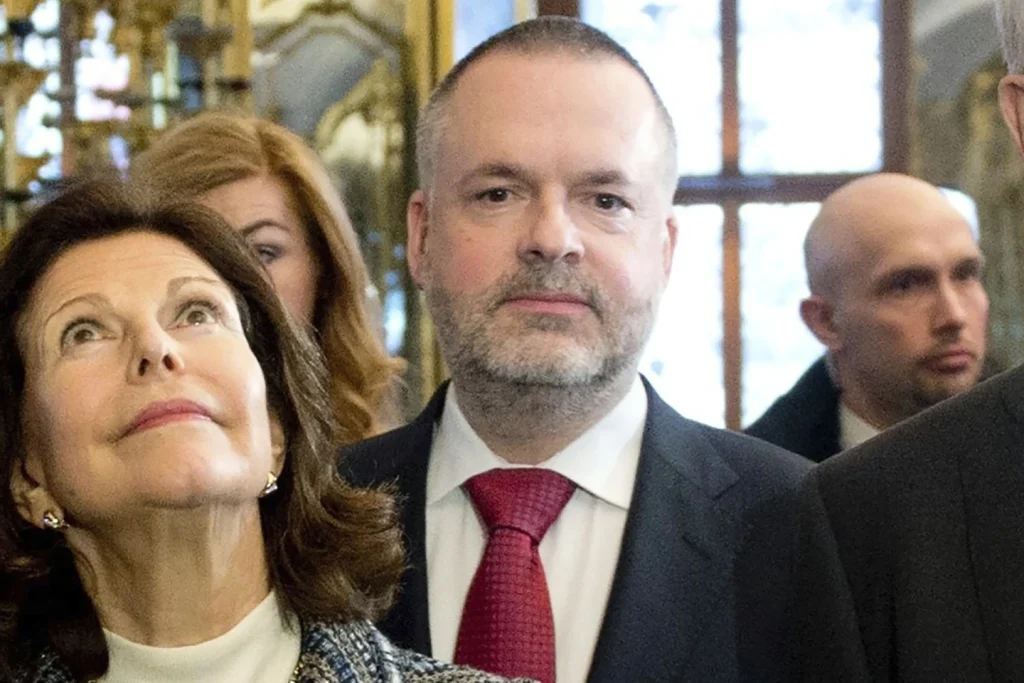In a recent development, it has come to light that the British Museum was made aware over two years ago of a potential theft or disappearance of valuable artifacts.
The alarm was raised by an astute art historian who had noticed suspicious objects being sold on the popular online platform, eBay.
However, the museum’s director, Hartwig Fischer, has admitted that he did not give due consideration to the whistleblower’s warning, a lapse for which he has taken full responsibility.
Consequently, Fischer has announced his resignation as investigators diligently work to unravel the mystery surrounding the whereabouts of numerous missing pieces, such as gold jewelry, semi-precious gems, and ancient relics dating back to the 15th century B.C.
Reflecting on the situation, Fischer acknowledged that the British Museum’s response to the warnings in 2021 was inadequate and failed to address the emerging problem in a comprehensive manner.
This admission underscores the need for accountability within the institution, as Fischer willingly accepts the blame for the failure.
The gravity of the situation cannot be overstated, as the disappearance of these priceless artifacts not only represents a significant loss for the museum but also raises concerns about the preservation and security of cultural heritage.
The revelation that such valuable items could potentially be traded on a popular online marketplace like eBay is deeply troubling.
It highlights the challenges faced by institutions in safeguarding their collections in an increasingly interconnected and digital world.
The incident serves as a reminder that vigilance and proactive measures are crucial to prevent the illicit trade of cultural artifacts, which not only compromises the integrity of historical objects but also erodes the collective memory and cultural identity of nations.
As investigators delve into the case, it is hoped that they will uncover vital clues and shed light on the circumstances surrounding the disappearance of these precious artifacts.
The British Museum, a revered institution renowned for its vast collection of historical treasures, must now address the systemic issues that allowed such a lapse in security to occur.
This incident serves as a wake-up call for museums worldwide, emphasizing the need for robust protocols, improved security measures, and enhanced collaboration with law enforcement agencies and the wider community to protect and preserve our shared cultural heritage.
While the resignation of Hartwig Fischer is a step towards accountability, it also presents an opportunity for the British Museum to reassess its practices and redouble its efforts to ensure the safety and integrity of its collections.
The museum must not only rectify the shortcomings that led to this unfortunate incident but also take the necessary steps to rebuild public trust and confidence.
By doing so, the British Museum can reaffirm its commitment to the preservation, study, and dissemination of knowledge about our shared human history, ensuring that future generations can continue to benefit from the invaluable insights that these artifacts provide.
The recent dismissal of a staff member by the museum, which occurred over a week ago, has brought about serious consequences.
The museum has made it explicitly clear that legal action will be pursued against the individual in question, signaling the severity of the situation.
In response to this incident, London’s Metropolitan Police have taken charge of the investigation, demonstrating the gravity of the matter at hand.
Moreover, the museum has taken proactive measures by commissioning an independent review of its security protocols, aiming to identify any potential weaknesses or loopholes that may have contributed to the unfortunate incident.
Additionally, the institution has implemented a robust and vigorous program to recover the missing items, emphasizing their commitment to rectifying the situation and ensuring the return of the valuable artifacts.
This comprehensive approach showcases the museum’s dedication to upholding its reputation as a bastion of culture and heritage, as well as its determination to prevent such incidents from occurring in the future.
The British Museum, a venerable institution that has stood for 264 years, holds a prominent position as a must-visit destination for tourists in London, attracting visitors from all corners of the globe.
Its expansive collection boasts an array of treasures, including the renowned Rosetta Stone, which played a pivotal role in deciphering the enigmatic language of ancient Egypt.
Additionally, the museum houses ancient Chinese scrolls adorned with 12th-century poetry, as well as masks crafted by the Indigenous communities of Canada.
However, amidst its acclaim, the British Museum has become a subject of contention due to its steadfast refusal to repatriate historically significant artifacts acquired during the era of the British Empire.
Notable among these controversies are the disputes surrounding the marble carvings from Greece’s Parthenon and the Benin bronzes from West Africa.
Critics argue that the museum’s stance undermines the notion of cultural preservation, as exemplified by Despina Koutsoumba, the head of the Association of Greek Archaeologists, who recently expressed her dissatisfaction with the museum’s position on Greek heritage.
In light of Fischer’s recent announcement, which entailed an apology to the whistleblower, Ittai Gradel, a distinguished British-Danish art historian and dealer, a significant development has unfolded within the art world.
Gradel, in an interview with The Associated Press, revealed that his suspicions were aroused upon acquiring one of three objects listed by a seller on eBay.
Subsequently, Gradel embarked on a meticulous investigation, tracing the origins of the two items he did not purchase, only to discover their connection to the very museum in question.
Interestingly, the object he did purchase was absent from the museum’s official catalog, yet he unearthed that it had been previously owned by an individual who generously bequeathed his entire collection to the museum back in 1814. Gradel’s tenacious pursuit led him to identify the seller through PayPal, revealing that the individual in question was an employee at the museum who has since been terminated.
Alas, Gradel lamented that the 69 other objects he had procured from the same seller were now tainted by association.
While Gradel expressed his acceptance of Fischer’s apology and commended his decision to step down, he also called for the resignation of Deputy Director Jonathan Williams, citing Williams’ previous assurance that a comprehensive investigation had found no evidence of impropriety.
Responding to the gravity of the situation, the museum announced on Friday that Williams would temporarily step aside pending an independent review.
This unfolding saga has sent shockwaves through the art world, underscoring the importance of maintaining transparency and integrity within cultural institutions.
In a recent development surrounding the controversy engulfing the museum, Gradel expressed his astonishment at the dismissive response he received from Fischer.
The renowned art collector lamented the apparent lack of responsibility exhibited by museum officials in the face of compelling evidence.
Fischer, on the other hand, attempted to address the allegations by asserting that the museum had indeed taken them seriously earlier this year.
However, he downplayed the concerns, claiming they only pertained to a small number of items. Fischer expressed frustration upon discovering that Gradel possessed a significantly larger number of disputed items, without mentioning him by name.
Gradel vehemently denied withholding any information from the museum and accused Fischer of failing to thoroughly review the documents he had provided.
Gradel further highlighted his willingness to assist the museum in any way necessary, emphasizing that they had never reached out to him.
In a surprising turn of events, Fischer publicly admitted his misjudgment of Gradel’s character and expressed sincere regret for his earlier remarks.
As a German art historian, Fischer announced his intention to step down from his position once a temporary replacement could be appointed.
In light of recent events, George Osborne, the esteemed chair of the museum trustees, has made a statement regarding the resignation of Fischer, a prominent member of the board.
Osborne expressed that the board has wholeheartedly accepted Fischer’s decision to step down from his position and commended him for his honorable approach in addressing the mistakes that have transpired.
This acknowledgement highlights Fischer’s integrity and courage in taking responsibility for any missteps that may have occurred under his purview.
The museum trustees, under the guidance of Osborne’s leadership, have demonstrated their commitment to upholding the highest standards of accountability and transparency.
As they navigate through this challenging period, it is evident that the board remains dedicated to ensuring the museum’s continued success and maintaining the public’s trust.

In a resolute and determined manner, Osborne expressed his unwavering commitment to rectifying the issues that have plagued the museum.
With a sense of purpose and conviction, he emphasized the enduring nature of the museum’s mission, spanning across generations.
Osborne’s words resonated with a steadfast resolve to not only address the shortcomings but also to instill a renewed sense of trust and confidence in the institution.
He acknowledged the importance of learning from past mistakes and working diligently towards regaining the admiration and respect the museum once enjoyed.
This declaration of intent served as a rallying cry, uniting all stakeholders in a collective effort to restore the museum’s former glory.
The museum administration has made it explicitly clear that they will pursue legal action against the staff member who was recently dismissed from their position.
This decision demonstrates the museum’s commitment to upholding the principles of accountability and responsibility within their organization.
By taking legal action, the museum aims to send a strong message to both current and future employees that any breach of trust or violation of the museum’s code of conduct will not be tolerated.
Moreover, this course of action serves as a deterrent to potential wrongdoers and emphasizes the museum’s dedication to maintaining a professional and ethical work environment.
The museum’s decision to resort to legal measures signifies their determination to protect the reputation and integrity of the institution, as well as ensure that justice is served.
Through this action, the museum is not only safeguarding its own interests but also reinforcing the importance of ethical behavior in the workplace.
